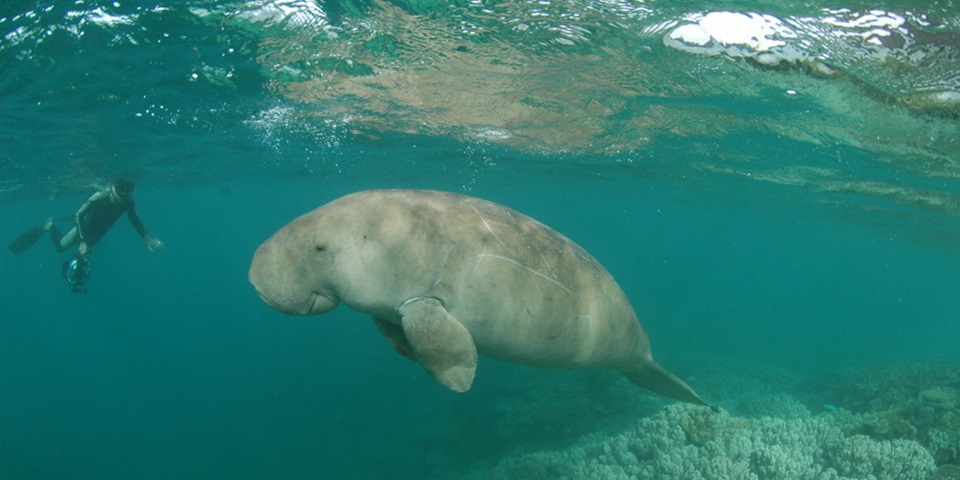News
Study documents Dugongs use of coral reef lagoons in the Oceania island region

Findings to inform local conservation initiatives and aid identification of critical seagrass habitats
Dugongs are the world’s only herbivorous marine mammal and keep crucial ocean ecosystems in balance for a raft of other sea life. However, little is known about how they use coral reef lagoons.
Dr Christophe Cleguer from Murdoch University’s Harry Butler Institute has today published a study that identifies new coral reef lagoon habitats for this vulnerable species.
Our study is the first to document how dugongs use coral reef lagoon environments in the Oceania island region,” said Dr Cleguer.
The findings will inform local conservation and management practices, as well as discover new seagrass ecosystems.
“Dugongs are known to be excellent bio-indicators of seagrasses, which are among the most valuable ecosystems on earth and of fundamental importance to human life,” explained Dr Cleguer.
“Yet the extent and distribution of seagrasses for much of the globe is unclear.”
“The data we have collected on the dugongs’ use of space can now be used to direct in-water sampling to assess habitats and verify the presence of critical seagrass meadows.”
The research also identified areas used by the tracked dugongs where no dugongs had been observed during past aerial surveys and it is the first proof of the dugongs’ use of a fore reef shelf in the open ocean as a movement corridor.
The research team used GPS-satellite tracking systems to monitor the movements of 12 adult dugongs at three locations in the coral reef lagoons of New Caledonia.
Each animal needed to be captured to be equipped with telemetry devices, which was done via the widely recognised rodeo technique. This required close pursuit of each individual dugong on jet ski, with researchers launching off the side to physically capture the animals in their arms.
Once captured, the dugongs were secured in a stretcher on the side of the processing boat for tagging and measuring. Each dugong was equipped with GPS-satellite tags which enabled the team to collect movement data with position accuracy of 2-10 m.
“One of the goals of my research is to empower communities to manage their own conservation and marine management efforts, and with the data and information we have from this body of work we will be able to help communities understand the extent of conservation efforts required to ensure dugong survival.”
The dugong is listed as Vulnerable to extinction at a global scale by the International Union for Conservation of Nature and it is of high biodiversity, cultural and traditional value across its range.
Acknowledgement
The bulk of this study was undertaken during Dr Cleguer’s PhD in a co-tutelle between James Cook University and the University of Pierre and Marie Curie/Institute of research for development. Murdoch University’s Harry Butler Institute have supported Dr Cleguer’s writing and publishing of the research.
News
Study documents Dugongs use of coral reef lagoons in the Oceania island region
Posted on
Topics